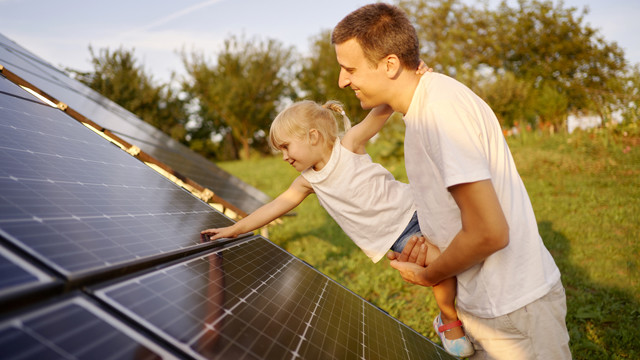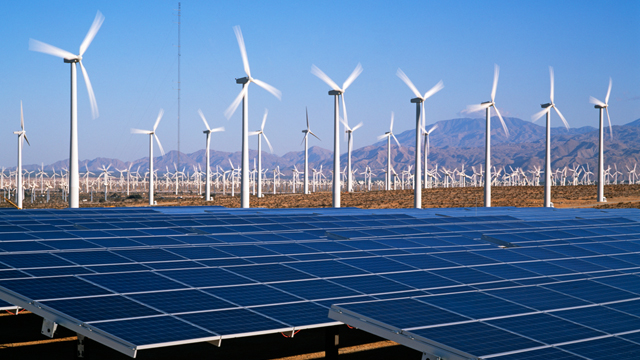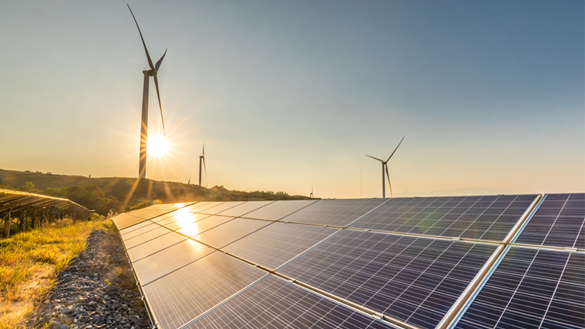
How does solar power work?
Solar power works by converting energy from the sun into power. There are two forms of energy generated from the sun for our use – electricity and heat.
Both are generated through the use of solar panels, which range in size from residential rooftops to ‘solar farms’ stretching over acres of rural land.
Is solar power a clean energy source?
Yes, solar power is a renewable and infinite energy source that creates no harmful greenhouse gas emissions – as long as the sun continues to shine, energy will be released.
The carbon footprint of solar panels is already quite small, as they last for over 25 years. Plus, the materials used in the panels are increasingly recycled, so the carbon footprint will continue to shrink.
When was solar power discovered?
Solar energy was used by humans as early as the 7th century B.C. when humans used sunlight to light fires by reflecting the sun’s rays onto shiny objects. Later, in 3rd century B.C., the Greeks and Romans harnessed solar power with mirrors to light torches for religious ceremonies.
In 1839 and at the age of just 19, French physicist Edmond Becquerel discovered the photovoltaic (PV) effect while experimenting with a cell made of metal electrodes in a conducting solution. He noted that the cell produced more electricity when it was exposed to light – it was a photovoltaic cell.
In 1954 PV technology was born when Daryl Chapin, Calvin Fuller and Gerald Pearson developed the silicon PV cell at Bell Labs in 1954 – the first solar cell capable of absorbing and converting enough of the sun's energy into power to run everyday electrical equipment.
Today satellites, spacecraft orbiting Earth, are powered by solar energy.
How exactly is electricity from solar energy produced?
Solar panels are usually made from silicon, or another semiconductor material installed in a metal panel frame with a glass casing. When this material is exposed to photons of sunlight (very small packets of energy) it releases electrons and produces an electric charge.
This PV charge creates an electric current (specifically, direct current or DC), which is captured by the wiring in solar panels. This DC electricity is then converted to alternating current (AC) by an inverter. AC is the type of electrical current used when you plug appliances into normal wall sockets.

What’s the difference between solar PV panels and solar thermal panels?
Solar PV panels generate electricity, as described above, while solar thermal panels generate heat. While the energy source is the same – the sun – the technology in each system is different.
Solar PV is based on the photovoltaic effect, by which a photon (the basic unit of light) impacts a semi-conductor surface like silicon and generates the release of an electron. Solar thermal is less sophisticated and simply the direct heating of water (or other fluids) by sunlight. For domestic use, solar thermal panels are also installed on a roof facing the sun, heating water stored in a hot water cylinder and so providing hot water and heating. On a larger scale, solar thermal can also be used in power stations.
What are solar farms?
Solar farms, also known as solar parks or solar fields, are large areas of land containing interconnected solar panels positioned together over many acres, to harvest large amounts of solar energy at the same time. Solar farms are designed for large-scale solar energy generation that feed directly into the grid, as opposed to individual solar panels that usually power a single home or building.
Can solar power be generated on a cloudy day?
Yes, it can – solar power only requires some level of daylight in order to harness the sun’s energy. That said, the rate at which solar panels generate electricity does vary depending on the amount of direct sunlight and the quality, size, number and location of panels in use.
Who are the largest producers of solar power worldwide?
As of 2022, China is the largest producer of solar powered electricity generation in the world. The US comes in second, followed by Japan, Germany and India.1
How is more solar power being brought into our electricity systems?
Both the UK and US governments are aiming to decarbonise their electricity systems by 2035, in which renewable energy sources like solar power are set to play a major part.
Solar energy in the UK
The UK's first transmission-connected solar farm was energised in May 2023. This was the firstPV solar array to feed electricity directly into the UK’s transmission network, allowing it to be transported over greater distances. Previously, UK solar farms were connected to the country's distribution networks – the lower-voltage regional grids that carry power from the high-voltage transmission network to homes and businesses.
Located near Bristol, this solar plant is expected to generate over 73,000 megawatt hours (MWh) annually – enough to power the equivalent of over 17,300 homes – and will displace 20,500 tons of CO2 each year compared to traditional energy production.
The UK government’s Powering up Britain report has reaffirmed its ambition for a five-fold increase in deployment of solar generation by 2035, with up to 70 gigawatt (GW) installed – enough to power around 20 million homes.
Read more about the UK's first transmission-connected solar farm
Solar energy in the US
The Solar Futures Study, released by the U.S. Department of Energy (DoE) in 2021, discusses their blueprint for a zero-carbon grid and the significant role solar will play in decarbonising the country’s power grid. According to the study, 40% of the nation’s electricity has the potential to be powered by solar energy by 2035.
In April 2023, the Biden-Harris administration announced an $82 million investment to fund technologies that will help integrate solar energy into the grid. The investment will increase domestic solar manufacturing and recycling, which will help to strengthen the clean energy grid in the US.
Last updated: 16 May 2023
The information in this article is intended as a factual explainer and does not necessarily reflect National Grid's strategic direction or current business activities.



